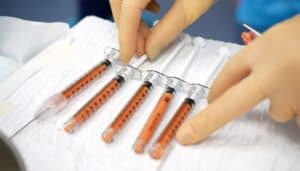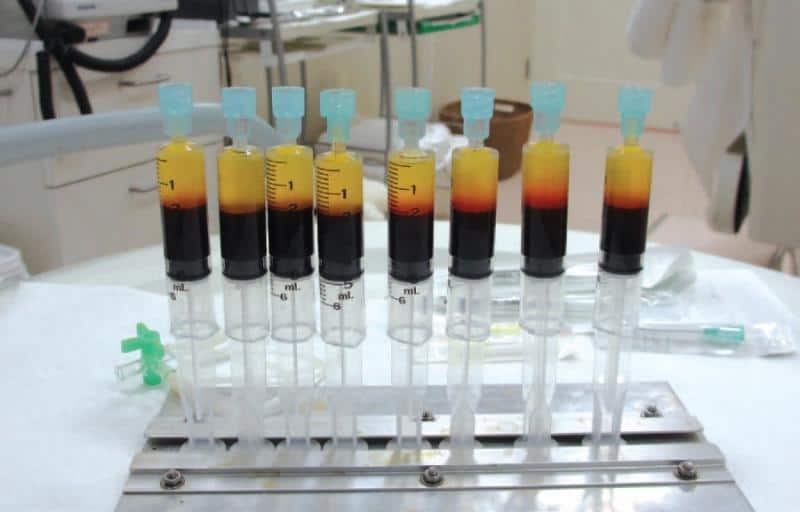Harnessing Fat Transfer Techniques for Repairing Congenital Defects
Key Takeaways
-
Fat transfer is a medical procedure that harvests fat from one place on the body. The harvested fat is then injected into another area to correct defects.
-
It has an important role in the repair of congenital defects and offers volume and symmetry.
-
Common techniques include liposuction to extract fat and careful injection into the target area.
-
Outcomes vary, but many patients experience improved function and appearance after fat transfer procedures.
-
This technique provides a natural alternative to synthetic implants or fillers.
-
As research continues, fat transfer is going to get more effective and used more widely in medicine.
Did you know over 200,000 babies are born with congenital defects each year? Fat transfer provides promise in surgical repair.
Doctors use this method to fix defects. They shift fat from one area to another. It’s easy, but it’s effective. The results? Improved appearance and function. Surgeons refine these techniques daily, making them better and safer.
What does the future look like? More precision and less recovery time. You see a glimpse of a world where these defects are history.
Ready to jump in and have a look? Let’s go!
What is Fat Transfer?
Definition of Fat Transfer
Fat transfer, known as fat grafting, is a surgical procedure. It takes fat from one part of your body to another part of your body.
Picture this: you take fat from a place you have plenty, like your thighs or belly, and put it where you need more volume, like your face or breasts. It’s done by using techniques such as liposuction to collect the fat and injecting it into the desired area.
The cool part? It uses your very own fat, so you don’t have to worry about rejection or complications. This makes it safer than synthetic fillers.
History and Development
The story of fat transfer began in 1893.
Gustav Neuber, a pioneering German surgeon, was the first to transfer fat from the arm to the eye area. He invented this cutting-edge procedure to fix the scars. Then, it was messy, and there were so many problems that it was difficult to adopt.
Fast forward to the 1990s, and it improved.
Plastic surgeons began to use fat grafting to enhance faces, breasts, and even hands. Thanks to techniques like centrifugation, which Dr. Sydney Coleman popularized, fat became the ideal filler.
Now, fat transfer is supported by research showing it’s both safe and effective.
Common Uses in Medicine
Fat transfer is incredibly versatile in medicine. You may use it to smooth out wrinkles, fill in areas after trauma, or even tackle congenital defects.
It’s useful in plastic surgery for cosmetic fixes and reconstructive procedures. For instance, once a vascular tumor has been excised, fat transfer can repair soft-tissue deformities. It also has a use with vascular anomalies and for improving a person’s body look.
Side effects like swelling and bruising can occur but usually disappear in days to weeks. This quick recovery makes fat transfer a reliable choice for many people.
Role in Congenital Defect Repair
Importance of Fat Transfer
Fat transfer is crucial for improving surgical outcomes for congenital defects. It makes surgeries look and feel better.
When you use your own fat, it mixes more with your body and appears more natural. The key here is that fat is not mere filler — it is regenerative and healing.
This means you heal better and faster, which is a huge win. Imagine a procedure that not only resolves a problem but also allows you to recover faster and with fewer complications.
That’s what fat transfer brings to the table. It’s like giving your body’s natural forces a boost to do more good.
Types of Congenital Defects Addressed
Fat grafting has been shown to treat defects such as craniosynostosis and cleft lip.
In craniofacial microsomia, fat grafting corrects facial asymmetry.
This is important because these defects affect how you look and feel, impacting your quality of life.
Employing a personalized approach, fat grafting can target the unique needs of every defect. It’s not a one-size-fits-all; it’s a custom solution.
In Poland syndrome — whose cause is unknown — fat grafting helps enhance chest appearance.
In Parry–Romberg syndrome, fat transfer assists in correcting secondary tissue defects.
Advantages Over Traditional Methods
Fat transfer is minimally invasive. You’ll probably have fewer complications and a faster recovery.
Traditional surgeries often involve implants, which can feel foreign. Fat grafting uses your own fat, creating a more natural feel.
For instance, fat grafting improves appearance with minimal issues in older patients with craniosynostosis. It can be an adjunct to other treatments like bone surgeries, boosting outcomes.
The numbers speak for themselves: graft volumes show better retention with ADSC supplementation, proving fat transfer’s effectiveness.

Techniques of Fat Transfer
1. Liposuction for Fat Harvesting
When it comes to harvesting fat for grafting, you have several techniques to consider.
Liposuction is the gold standard; other methods include tumescent, ultrasound-assisted, and laser-assisted liposuction.
These techniques allow you to gently remove fat from areas such as your abdomen or thighs.
Gentle handling is everything. You want to keep those fat cells alive and kicking for best results. That’s where the significance of low vacuum pressure and small cannulas plays its part.
You want to remain comfortable throughout the procedure. That’s why we use local anesthesia to make it pain-free.
All you need to do is focus on making it easy. We want to keep these fat cells in great condition for the next step.
2. Purification and Processing Methods
Once the fat is harvested, it needs some cleaning up.
The fat is spun in a sterile centrifuge at a g-force of 1006.23g for 3 minutes. This step separates the fat into layers: supranatant (oil), subnatant (serum), pellet, and the desired fat layer.
You want to get rid of the excess fluids and any debris to help the fat grafts survive better. That’s where advanced tech enters the picture, ensuring the fat is pure and prepared for its new home.
Techniques like filtration systems and washing procedures make sure you receive top-quality fat for injection.
This painstaking process is what gives the most enduring results.
3. Injection Techniques in Surgery
Injecting the fat is a careful work of art. You employ various techniques to ensure it appears and feels natural. Layering and placement are key, allowing you to achieve those smooth contours.
You make small 3-mm stab incisions at a distance of 1–2 cm from the defect site. Then, using a cannula, you inject the fat into the desired area. This approach reduces complications and improves results. Precision is everything here, and then some.
The size of the grafts ranged from 2 × 2 cm to 5 × 10 cm with thicknesses of 1 to 3 cm. The goal is tension-free closure with the elevation of soft-tissue flaps. This meticulous approach allows the grafts to properly integrate, providing permanent results after a follow-up period of 2–5 years.
Outcomes of Different Approaches
Success Rates and Effectiveness
When it comes to fat grafting for repairing congenital defects, the success numbers vary.
Studies indicate that retention rates for fat grafts can be as low as 10% and as high as 80%, so it’s a little hit or miss.
Factors that contribute to success include careful patient selection and the technique utilized. Methods that help distribute and treat fat with care can enhance effectiveness.
For instance, retention in a mixed technique group was about 64%, which closely matches some earlier findings.
Understanding these stats helps set realistic expectations. It’s important to ensure that the graft stays viable and to look at how patients fare over time.
Ongoing assessments show how well the graft holds up, which can affect future procedures.
Patient Satisfaction and Recovery
Patients often tell us they’re happy after fat transfer procedures.
In fact, some studies show an impressive 97% satisfaction rate among the physicians.
Results tend to be satisfying for both patients and doctors.
Recovery times can vary, but most patients find the process manageable.
Generally, you may experience some swelling and bruising, which typically go away after a few weeks.
An important part of the process is follow-up care.
Regular check-ins help monitor recovery and ensure the results are as expected.
If there is calcification after lipofilling, it can appear on mammograms in a small number of cases (0.7%–4.9%).
Long-term Results and Stability
The long-term stability of fat grafts is influenced by a few factors.
While some studies report resorption rates of 30%–70% within a year, others show sustained improvements in contour and volume.
In the long term, results can be consistent, but regular check-ups are needed to monitor the graft.
Overcorrection is sometimes practiced to combat future fat resorption (up to 80%), per the Journal of Clinical Medicine.
We see retention rates decreasing skew more dramatically for congenital defects.
In mild cases, it was 50.3% — but this dropped down to 35.9% in severe cases.
At this 1-year mark, all patients typically see clinical improvements, demonstrating the potential benefits of the procedure.
Implications and Future Directions
Innovations in Fat Transfer Technology
Fat transfer technology has changed in some really cool ways.
One biggie is the stronger purification systems used to ensure the fat cells you’re using are up to snuff.
These systems assist in removing impurities, allowing for better results.
Regenerative medicine is well on its way.
It enhances the survival of fat cells and their implantation into new locations.
Better survival rates make results more predictable.
Retainment can vary wildly, from as little as 10% to as much as 80%.
There is also talk about new techniques that could expand what fat grafting can do.
To imagine using it not just for fixing congenital defects in other fields of medicine.
For example, combining fat transfer with other reconstructive procedures may lead to fewer surgeries or more natural-looking results.
The whole idea is to make fat grafting more reliable and versatile.
Potential for Broader Applications
Fat transfer isn’t just for congenital defects. It’s also being considered for treating trauma and coping with volume loss as we age.
The real strength of fat grafting is its versatility. For more than 20 years, physicians have used it to fill soft-tissue voids in the face, trunk, and extremities.
This is a relatively low-risk method. This broad application makes it attractive for many conditions.
In trauma or surgical cases, volume loss is a big issue. Fat grafting steps in to provide the needed fill and contouring.
The procedure is typically low-risk, which is why many doctors continue to recommend it.
Bear in mind that as many as 24% of patients require repeat injections.
There is a small chance of the calcifications showing up in mammograms.
Despite these hitches, its versatility makes fat grafting super valuable for a wide range of medical conditions.
Challenges and Considerations
Pediatric fat grafting has its challenges.
One big issue is resorption, in which the body absorbs the grafted fat over time. Studies show resorption rates can be as high as 70% within a year. This unpredictability means doctors often overcorrect, adding a bit more fat than needed to compensate for future loss.
The evidence about how much fat hangs around is still up in the air.
Another challenge is the lack of long-term data, particularly in younger populations.
Fat grafting has low risk; in some cases, it may require additional imaging or a biopsy.
Ongoing study is key to refining these techniques.
We need to focus on kids and teens so they have lasting results with minimal side effects.
Conclusion
Fat transfer shakes things up in repairing congenital defects. It provides a real shot at making life better for people who need it. The process uses your own fat to patch up and repair, which sounds wild but is actually pretty cool. Results? They’re often spot on.
The future promises cooler stuff still, new ways to make this method even better and safer. Take this opportunity to dive in and explore further. You may find out if it’s the right fit for you or someone you love.
The universe of medical fixes just keeps expanding, and fat transfer is part of that thrilling adventure. Stay tuned and keep your eyes open. Dig in, find a little more information, see where this thing might take you.
Frequently Asked Questions
What is fat transfer?
Fat transfer is the process of transferring fat from one area of the body to another. It’s commonly used in cosmetic surgery to add volume. The process begins with extracting fat through liposuction. Next, it purifies the fat before reinjecting it into the target area, providing a natural, biocompatible solution.
How does fat transfer help in repairing congenital defects?
Fat transfer can reverse the volume deficiencies and asymmetries from congenital defects. This treatment offers a minimally invasive method to improve both appearance and function. It promotes healing and integrates well with existing tissues, leading to greater patient satisfaction and improved outcomes.
What techniques are used in fat transfer for congenital defects?
That includes the harvest of fat via liposuction, the purification using a centrifuge, and its reinjection through microcannulas. Precision and expertise are crucial for achieving ideal placement and symmetry. This meticulous adoption helps reduce complications and improve efficacy in treating congenital malformations.
What are the outcomes of using fat transfer for congenital defects?
Results vary but often include improved symmetry, volume, and appearance. Patients rave about the natural results and lack of scarring associated with the procedure, which generally leads to a high level of satisfaction. Fat survival rates and integration can have a huge impact on long-term success, and it’s also why surgical expertise is so important.
Are there any risks associated with fat transfer for congenital defects?
Risks include fat necrosis, infection, asymmetry, and poor fat survival. Pickett said that choosing an experienced surgeon will minimize these risks. Preoperative evaluation and postoperative care are essential to safety and enhance the durability of outcomes.
What are the future directions in fat transfer for congenital defects?
The focus is on developing fat survival and integration. The research into stem cell-enriched fat transfer offers some hope for better outcomes. Continuous innovation emphasizes making it safer, more effective, and improving patient satisfaction. This progress is broadening the role of fat transfer in repairing congenital defects.
Why choose fat transfer over other methods for repairing congenital defects?
Fat transfer has natural results with minimal scarring. It’s less invasive than implants and cuts down on rejection. The procedure uses the patient’s own fat. This improves biocompatibility and reduces allergic reactions, making it a desirable choice for many patients.






